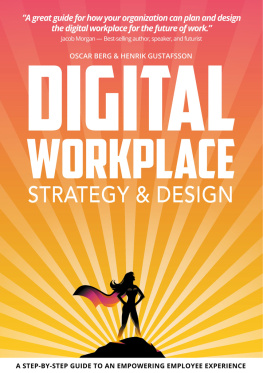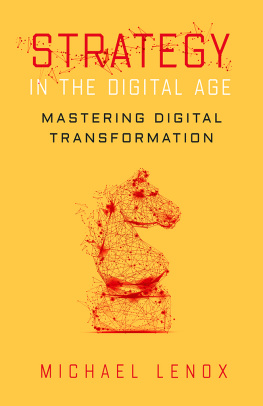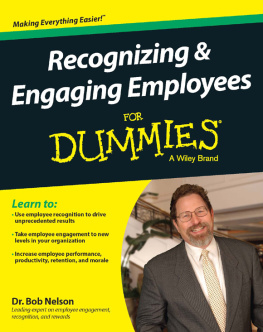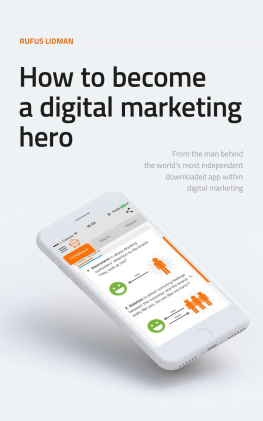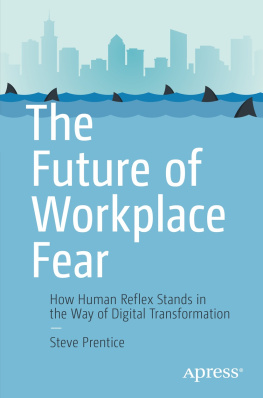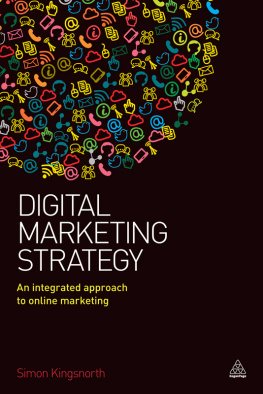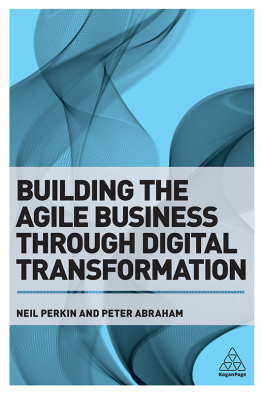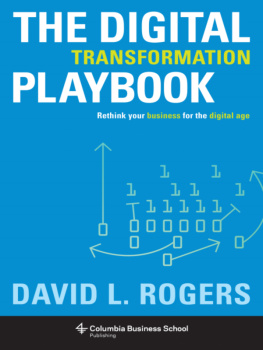TABLE OF CONTENTS
Oscar Berg & Henrik Gustafsson 2020
Publisher: Gr8 Mountains AB, Sweden
Print: BoD Books on Demand GmbH, Norderstedt, Germany
ISBN: 978-9-1984-7005-5
Oscar Berg (co-author) is a consultant, blogger, speaker and writer based in Lund, Sweden. He is an internationally recognized export on collaboration and the future of work. Oscar writes and speaks about subjects such as digital transformation, collaboration, the digital workplace and the future of work. Website: oscarberg.net
Henrik Gustafsson (co-author) is a consultant, speaker and writer based in Stockholm, Sweden. He speaks and writes about subjects such as digitalization, employee experience, productivity, collaboration and the digital workplace. He also provides coaching in health, energy, and personal development. Website: movingmind.se/henrikgustafsson/
PREFACE
Processesthe engines of fluxare now more important than products. Our greatest invention in the past 200 years was not a particular gadget or tool but the invention of the scientific process itself. Once we invented the scientific method, we could immediately create thousands of other amazing things we could have never discovered any other way. This methodical process of constant change and improvement was a million times better than inventing any particular product, because the process generated a million new products over the centuries since we invented it. Get the ongoing process right and it will keep generating ongoing benefits. In our new era, processes trump products.
The quotation above is from The Inevitable, a book by Kevin Kelly, who achieved fame as the founder and former executive editor of Wired magazine. In our view, it does a good job of summarizing what we need to focus on for successful digitalization and digital transformation of an organization. In addition to a clear purpose and vision, digitalization needs a process that spans the entire organization throughout its life, both creating change and changing when required.
Digitalization also requires a new approach in comparison to how most organizations have previously viewed the use of information technology. With digitalization, new digital technology is harnessed to enable and support new needs and behaviors. These needs and behaviors are in turn impacted and shaped by the digital technology we use. Technological progress and changes in our behavior are inseparable, like two sides of the same coin.
THE BLIND SPOT OF DIGITALIZATION
Technological progress is accelerating, and we will see a constant emergence of new digital opportunities and needs that organizations either play a part in creating or must adapt to. In other words, they need to be more innovative and agile.
These demands ultimately trickle down to the employees as individuals and as groups, and they are often caught in between rising demands and a digital work environment that slows them down rather than empowering them. This is because the growth of the digital workplace was almost entirely organic without any holistic view or coordination, making it complex, fragmented, and difficult to use. The question of how this environment should be designed to suit the employees and the work they need to do has not been asked often enough.
In our view, the digital work environment and the employee experience are the blind spots of the ongoing digitalization process.
Digital ways of working that allow unlimited digital communication and collaboration are an absolute must for successful digitalization and the required transformation of an organization and its business. Despite this, we still invest far too little in the digitalization of the employees ways of working and the development of the digital work environment, at least relative to what is invested in digitalizing the customer experience. And the focus that is dedicated to customers and improving their experience is almost nonexistent for employees.
Customer experience (CX) is often defined as the customers perception of a brand or organization resulting from all interactions during their relationship. Likewise, the same principle can be applied to employees perception of the organization they work for employee experience (EX). This is based on all interactions between the employee and the organization during their employment relationship.
Organizations across all industries must provide the best possible employee experience to remain competitive. Succeeding in this will help them attract and retain talent, enhance employee engagement and productivity, and contribute to a better customer experience. The importance of the user experience in maximizing the value of using digital services is akin to the key role of the employee experience for the value created by employees individually and collectively. This necessitates working smarter together to maximize value creation in line with the organizations purpose.

Similar to the different aspects of employee experience presented by Jacob Morgan in his book The Experience Advantage,The continuing digitalization of our society and of our professional and personal lives steadily increases the importance of the digital work environment and its resulting impact on the entire employee experience. Our digital interactions shape our culture the ideas and social behaviors we have in common. More specifically, we have a need to digitally interact with each other from anywhere, and this dictates what we require from our physical work environments and how we interact with them.
HOW TO USE THIS BOOK
This book presents an approach for holistically designing a digital work environment that considers both the culture and the physical work environment. Use the overview of the books structure below to quickly find the knowledge you need when you need it.
introduces you to how digitalization is changing the business environment, why it is important to support creative knowledge work and develop digital ways of working, and what type of problems many employees encounter in their digital work environment.
defines the digital workplace and describes what approach organizations need to both address problems in their employees digital work environment and take advantage of new digital opportunities.
explains servicification and service-dominant logic as applied to the development of the digital workplace, defines key concepts, and illustrates service orientation.
describes how to quickly outline a vision and roadmap for the digital workplace and align them with the organizations strategies by using an iterative and inclusive strategy process, which also enables new digital opportunities to be identified and utilized.
sets the stage for how to go from digital workplace strategy to the design of digital services. It explains how to plan service development and how to design the right services in the right way using the principles and tools of service design.
We conclude with a short epilogue where we share some personal reflections and a few tips on how we can help you on your continuing journey.
In the back, you will find a list of references and an

